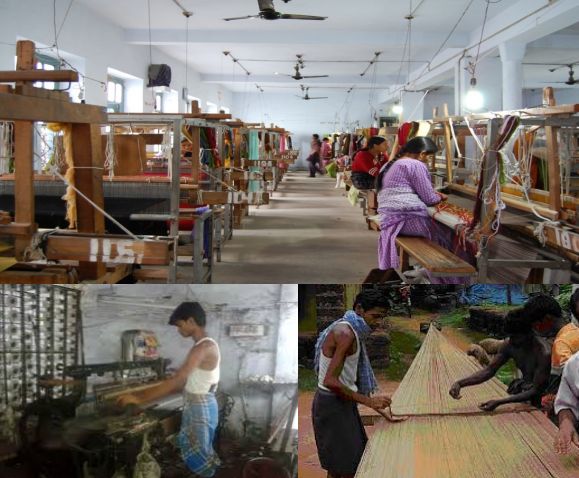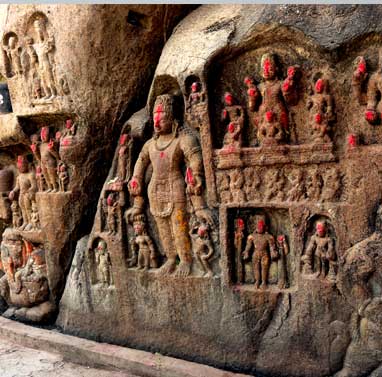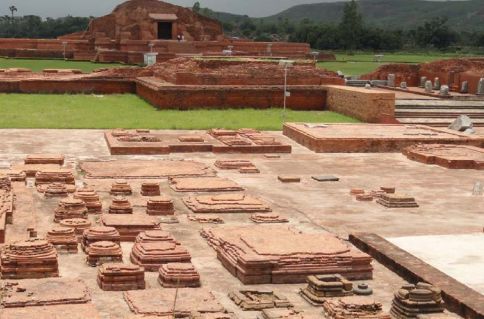................................................................................................................................................................................................................................................................................................................................................................................................................................................................................................................
Bhagalpur

Copyright © visitindia.org.in. All Rights Reserved.
Bhagalpur is an old town situated in the eastern Bihar on the bank of river Ganga. This town is famous for production of Silk and Cotton Textiles. Bhagalpur lies in the tradition as a silk weaving center. Bhagalpur occupies the most important part in production of Oak Tassar Silk and its products. It is also famous for its mangoes.
According to Hindu mythology, the name Bhagalpur is derived from “Bhagdatpuram” meaning city of good luck. Bhagalpur finds reference in the Indian epics Ramayan and Mahabharat. Bhagalpur formed part of Angika the ancient kingdom of Anga said to be ruled by Kunti’s eldest son, Karna. The temple of Manas-Kamna at Karnagarh in Nathnagar is dedicated to the memory of this generous king.
The tomb of Shuja, the brother of Mughul emperor Aurangzeb, reminds one of Bhagalpur’s close association with the later Mughals. At Tilkamanjhi chowk in Bhagalpur, Tilkamanjhi, the renowned freedom fighter was hanged by the British.
Best time to visit Bhagalpur
October to March is the best season to visit Bhagalpur.

Travelogues/Travel Logs of Roadtrips
Hit the road with the summary guides of our trips to various places in India. Any information feel free to drop a mail at info@visitindia.org.in


Get online driving directions, route guides, weekend planners, and customised itineries. Check out a few of our favorite user road trips, then start an adventure of your own.....Explore India by Road

Find us :-
Bhagalpur has various temples like Dudheswara Mahadeva, Venkateswara temple at Naugachia, Manas-Kamna Temple in Nathnagar, Jain temple at Nathanagar, Budha Nath Temple which is an ancient Shiva Temple on the bank of Ganges, Maharshi menhi aashram at Kuppa Ghat on the bank of river Ganges.

How to reach Bhagalpur
By Air : Nearest airport is at Patna 257 km
By Rail : Eastern railway connects Kiul to Burdwan or Howrah
North Bhagalpur is served by the Barauni-Katihar section of the North Eastern Frontier Railway
Directly connected with - Delhi, Patna, Kolkatta and other major cities of India
By Road : Well connected with Patna
NH 80 or 81 and NH 31 pass through Bhagalpur district
NH 31 connects Patna, Guwahati
NH 81 connects Mokama - Farakka road
NH 80 to NH 31 connects Vikramshila Setu




7 kms from Bhagalpur there is a temple known as Vasupujya Jinalaya with the shrines of Shantinath and Mahavira Jina among other shrines is considered very sacred by Jains.

5 kms from Bhagalpur is Champapur. The Jain Tirthankar Mahavira stayed here, Tirthankar Vasupujya is said to be born at this place. There are 2 jain temples here
What to see

25 kms away from Bhagalpur in Sultanganj is this very revered Shiva temple for the Hindus. There are some remarkable old rock carvings of Varah Avatar, Ganesha, the Buddha and other deities on the backside of the hillock.



38 kms away from Bhagalpur, is the ruins of the Vikramsila university which flourished from 9th century to 13th century. Established by the Dharmapala, there were thousands of students here once learning philosophy, grammar, metaphysics, logic etc. were taught here but the most important branch of learning was tantrism.


The sanctuary is a 50 km stretch of the Ganges River from Sultanganj to Kahalgaon. It is the only protected area for the endangered Gangetic dolphins in Asia. Once found in abundance, only a few hundred remain, of which half are found here. The Sanctuary also contains Indian smooth-coated otter, gharial, a variety of freshwater turtles, and waterfowls. The Gangetic dolphins have been declared as the National Aquatic Animal of India. The best time to visit is October and June
"Ganga dolphin Bhagalpur" by Alokprasad at en.wikipedia - Own work (Original caption: “I (Alokprasad (talk)) created this work entirely by myself.”)
Transferred from en.wikipedia by Ronhjones. Licensed under Public domain via Wikimedia Commons.

30 km from Bhagalpur is a famed hill believed to have been used for the Sagar Manthan according to Hindu mythology. The marks of the snake around the hill used for manthan and the foot prints of Lord Vishnu can be seen on this hill. There is a lake at its peak.


- The Rock Temple in Golgong
- Patalpuri cave and land adjoining Bateshwar cave on the Patharghata hill in Madhorampur
- Rock sculptures in Patharghatta
- Bhagalpur has a rich heritage in art and painting, one of the famous art is Manjusha.
- The name Manjusha is associated with an art form that originated in Anga Pradesh, a popular folklore about a mortal Bihula and snake goddess Mansa, and also a festival dedicated to snake deity Naga which is celebrated in Bhagalpur in the month of “Bhadra”(August).
- Manjushas are illustrated with paintings of Gods, Goddesses and other characters which narrate the lore of how Bihula saved her husband from the wrath of the snake goddess known for her anger when displeased but also her fierce protectiveness when propitiated.
- Manjushas are painted only in three colors – red, yellow, and green. The faces of the characters in Manjusha are always side profile and the eyes and nose are conic



Is held in July-August in Sultanjang for a month. Devotees all over collect water from Ganga and they walk to Deoghar temple around 100 kms away praying to Lord Shiva. Lakhs of people take part in this procession as they are fed and rest tents are set up all over the way. People from Nepal and Bhutan also join them and finally they pour the holy water on the Shivlinga.
